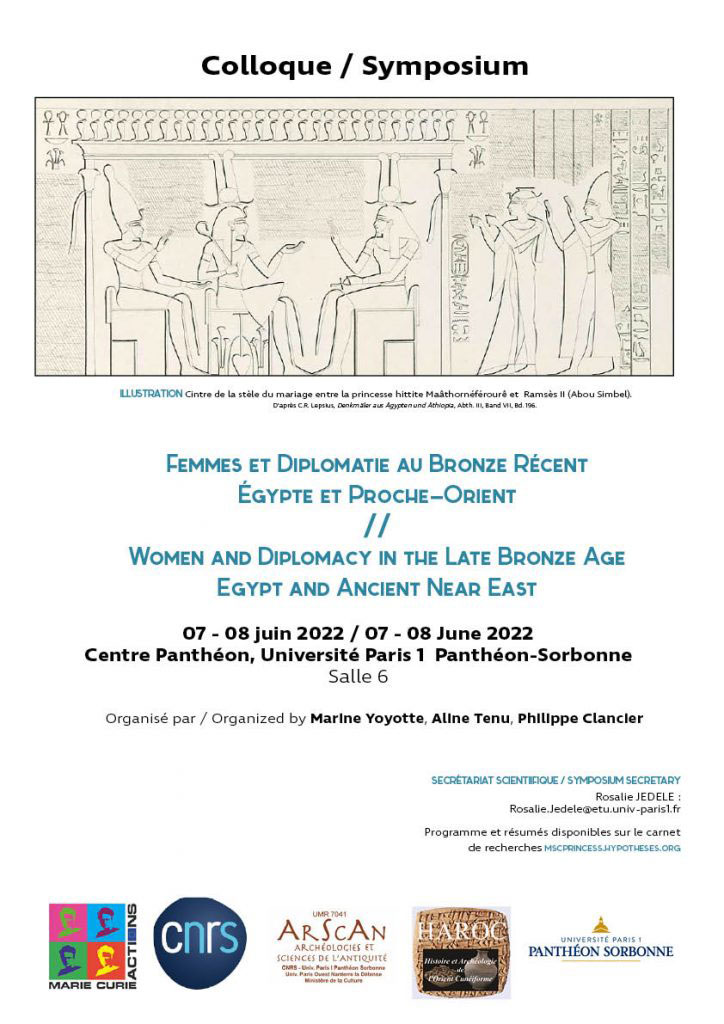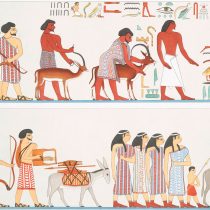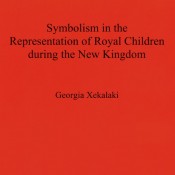A symposium on Women and Diplomacy in the Late Bronze Age is to start Tuesday, June 7, lasting until Wednesday, June 8, in Paris’ Centre Panthéon, at Université Paris 1 Panthéon-Sorbonne.
The symposium focuses on historical and archaeological evidence of the identities and activities of women entangled in the diplomatic activity between Eastern Mediterranean states during the Bronze Age. The vast cuneiform archives from various Near Eastern sites record the diplomatic networks between states, from dominant Empires to vassal city-states in imperial buffer zones. It is in this correspondence where various women, from queens and princesses to commoners and servants appear as senders, receivers, or subjects of conversation, orchestrating diplomatic and trade agreements, involved in power-balancing gift-giving, organizing diplomatic marriages, or being themselves diplomatic brides or part of such a bride’s entourage. Thankfully, further textual and archaeological material evidence supports what is described in such letters, through sites identified as dwellings of women coming from abroad (e.g. the so-called ‘harem’ in Egypt’ Gurob), elite burials with the deceased are identified as of foreign origins, objects recording foreign princesses’ court presence and even personal names (eg. the incorporation of Levantine-inspired names in Egypt).
Through the conference, internationally acclaimed authorities will bring together the latest evidence on the involvement of women in diplomacy during the Late Bronze Age aiming at reassessing it and updating what has been said so far. Among the participants, Susanne Bickel, principal investigator of tomb KV 40 (where burials of royal women and children have been identified) will discuss the court functions of the female entourage of Amenhotep III, Marine Yoyotte, a leading expert on the archaeology of royal women through her research on the ‘harem’ site of Gurob, will present new evidence on the origin of certain foreign royal wives of Egypt’s Pharaohs, and Marc Gabolde is to assess evidence on the fate of two Mitannian princesses who were sent to Egypt as diplomatic brides of Amenhotep III and Akhenaten. On the Near Eastern side, Philippe Clancier is to discuss claims to the throne based on diplomatic marriages between Elam and Assyria, and Jaume Llop-Radua and Daisuke Shibata will talk about Assyrian princesses as diplomatic brides. Agnès Garcia-Ventura and Jordi Vidal will discuss issues of female agency in diplomatic correspondence, and Kathrin Gabler will even tackle the intriguing matter of non-royal female diplomats in Ramesside Egypt. Assessing the practice of a diplomatic marriage, Josué Justel reviews the diplomatic effectiveness of such a marriage (with Mittani as a case study), Carole Roche-Hawley will discuss divorces after a diplomatic marriage, and Alice Mouton will deal with the issue of the Hittite Tawannana. Finally, a number of talks (Jana Mynářová, Dominique Lefévre, Sophie Démare-Lafont) will deal with the legal and historical background of diplomatic marriages, in some cases through the marriage of Pharaoh Ramesses II with the Hittite Princess known in Egypt as Maathorneferure.
The event is organized by Egyptologist Marine Yoyotte, and Near East researchers Aline Tenu and Philippe Clancier, all current members of the History and Archaeology of the Cuneiform Orient team (Équipe HAROC) of the research synergy Archéologies et Sciences de l’Antiquité (ArScAn – UMR 7041). The symposium Women and Diplomacy in the Late Bronze Age. Egypt and Ancient Near East is part of the Marie Skłodowska-Curie project PRINCESS: Politics and Royal ForeIgn women in the Court of Egypt: a new analysis of Diplomatic Marriages during Late Bronze Age. It has received the financial support of the H2020 program (grant agreement 2020 n° 898329 ), of UMR 7041 Archéologies et Sciences de l’Antiquité (team Histoire et Archéologie de l’Orient Cunéiforme) and of the BQR from Université Paris 1 Panthéon-Sorbonne.
You may download the program and abstracts of the symposium here.





